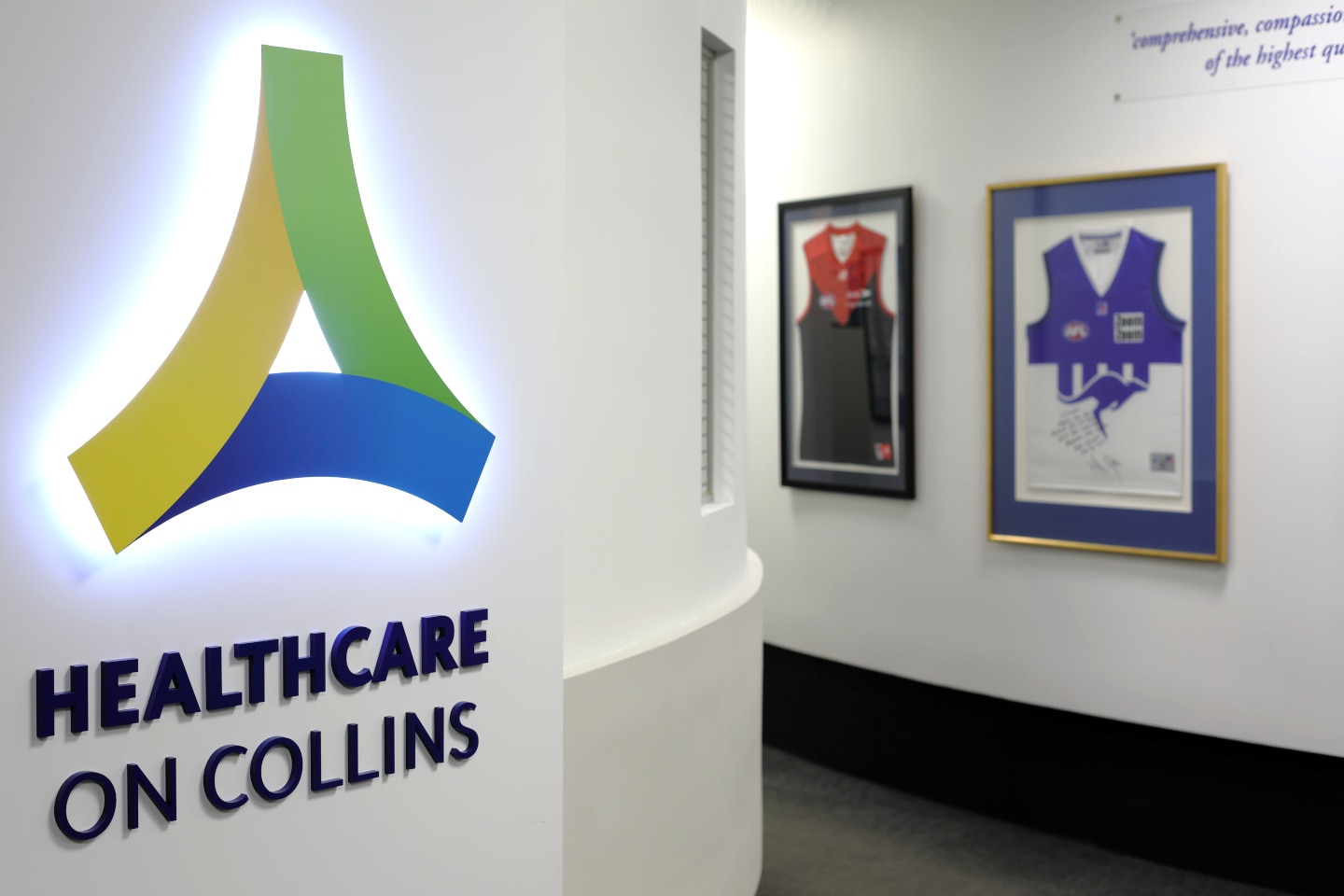Physiotherapy for the Foot & Ankle
Foot & Ankle Services & Healthcare on Collins
The Physiotherapists at Healthcare on Collins can address issues surrounding the ankle and foot region, which is comprised of a complex anatomy of 26 bones, 33 joints, and an extensive network of over a hundred muscles and ligaments.
The comprehensive Physiotherapy services include carefully evaluating and managing a spectrum of injuries associated with the lower limbs; and optimally guiding you through the full course of your injury and achieving your goals.
If you’ve suffered from an ankle sprain or ongoing foot discomfort, don’t try to walk it off and leave it untreated. Instead, seek the care of a Physiotherapist to receive compassionate, comprehensive healthcare of the highest quality.

What Your Physio Team Can Do to Assist You:
- ✔Assess and confirm the diagnosis
- ✔Provide you with an individualised strength-building and stability exercise program that will guide you on how to target your areas of weakness and concern, while avoiding aggravation
- ✔Correct measurements and tests will be taken to show your progress and keep you accountable
- ✔Provide taping, dry needling, and hands-on techniques that relax the area, manage pain, and promote healing
- ✔Video analysis of gait, movement patterns, and posture to better understand the reasons behind specific issues
- ✔Aid you to regain a pain-free life and resume your healthy, active lifestyle
- ✔Refer to a Podiatrist for footwear and orthotic advice

Conditions Affecting the Foot & Ankle
At Healthcare on Collin the Physiotherapists treat all acute and chronic foot and ankle conditions. The conditions seen most commonly are:
- Lateral ankle sprains: Occur when the ligaments on the outer side of the ankle are overstretched, leading to instability; physio involves strengthening and balance training to prevent future sprains and regain function.
- Achilles injuries: Range from tendonitis (inflammation) to partial or complete tears of the Achilles tendon; physiotherapists may use stretching exercises, eccentric and other loading programs to facilitate healing and prevent recurrence.
- Midfoot ankle sprains: Affect the ligaments in the middle of the foot, leading to pain and limited mobility; treatment typically includes mobilisation techniques and progressive weight-bearing exercises to restore normal foot function.
- Plantar fasciitis: Characterised by pain and inflammation in the tissue along the bottom of the foot, physiotherapy focuses on strengthening and stretching tight calf muscles, strengthening the foot arch, and possibly being referred for Orthotics
- Stress fractures: These involve bony damage to the foot or ankle usually as a result of repetitive impact, accumulating over time; physiotherapy aims to restore movement, gait retraining, and strengthening exercises.
In some cases, these conditions can become chronic, so it is important to have them treated as early as possible.


The Process to Treat Your Foot & Ankle

Initial Assessment
The process begins with an initial assessment and diagnosis.
The clinician will conduct a thorough physical examination, examining your foot for signs of swelling, tenderness, or any other abnormalities.
Clinical tests will be performed to pinpoint the exact nature of the injury and identify activities that may exacerbate your symptoms.
If your pain is particularly severe, location-specific, and makes weight-bearing difficult, you may be referred to a sports doctor or a general practitioner (GP) for further evaluation.

In cases of acute injuries, Healthcare on Collins strives to accommodate same-day clinic visits.
The clinic offers on-site x-ray services, enabling prompt assessment of the severity of potential fractures.
It is often best to undergo an assessment by a physiotherapist or podiatrist, who can then provide a referral for imaging if deemed necessary.
This approach ensures that any imaging is conducted with a clear understanding of your specific condition, optimising its relevance to your treatment plan.

Your treatment plan for foot and ankle issues may include a range of therapeutic techniques, such as:
Massage: Gentle massage to alleviate tension and promote circulation in affected areas.
Joint Mobilisation: Techniques to improve joint mobility and reduce stiffness.
Strength and Stability
Exercises: Customised exercises with weights, balance boards, and TheraBands to enhance muscle strength and overall stability.
Supportive Measures: When necessary, physios can provide braces, taping, or other supports to aid in your recovery and prevent further injury.
Why Choose Healthcare on Collins?
The advantage of the physiotherapists at Healthcare on Collins lies in its experience serving a diverse range of the population.
- ✔Clients can benefit from access to athletic testing like VALD Performance and Dynamometers, which assist in the accurate assessment of lower limb strength
- ✔Physios assist individuals in achieving their goals of returning to sports and enjoying daily life using specific functional tests and personalised exercise programs
- ✔Conveniently situated in Melbourne CBD, the premises include an excellent gym facility
- ✔With over 30 years in operation, the primary motivation is to deliver exceptional services to the community.
To begin, please contact us or make an appointment below.
Call Us
(03) 9650 4284

FAQ
Do flat feet or high arches cause foot or ankle pain?
Conversely, high arches may lead to an inclination to shift weight towards the outer edges of the feet, increasing the risk of ankle ligament sprains. In this case, strengthening and proper alignment of the knees over the toes are important considerations.
What are the different grades of an ankle sprain?
- Grade one corresponds to minor tearing of a few ligament fibres.
- Grade two represents more significant damage, with roughly half of the ligament fibres torn.
- Grade three, the most severe, indicates a complete rupture where the entire ligament is torn.
I have a minor ankle sprain, do I need to see a Physio?
Therefore, it is advisable to consult a Physiotherapist, even in the case of a grade one ankle sprain.
Can Physios provide advice and guidance regarding footwear?
Yes, to a degree. While Physiotherapists can provide shoe recommendations, for a more comprehensive assessment approach, it is advisable to consult podiatrists.
They can offer expert guidance to ensure you have the right shoes for your specific needs.
